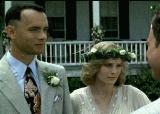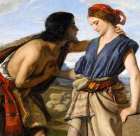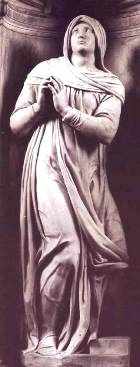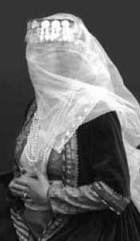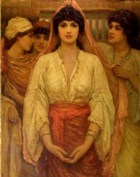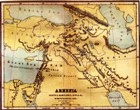Rachel & Jacob in love
 Rachel was the beautiful daughter of Laban, brother of Isaac’s wife Rebecca.
Rachel was the beautiful daughter of Laban, brother of Isaac’s wife Rebecca.
Every afternoon she watered her flock of sheep at a well near Haran, an outpost of the ancient city of Ur – see Map 1, Bible Maps
Rachel at the well
One afternoon a young traveller called Jacob was there. He chatted with the shepherds, telling them who he was and asking about other members of his family – they had originally come from this area, and he was looking for the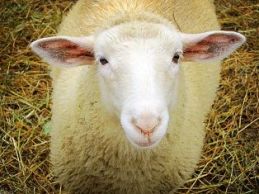 m.
m.
The men obligingly pointed towards a woman in the distance, telling Jacob she was Rachel, the daughter of his mother’s brother Laban.
When Jacob saw Rachel at close quarters he was instantly smitten. In an act of bravado he removed the great stone cover of the well single-handed, hoping to impress the young woman. He did.
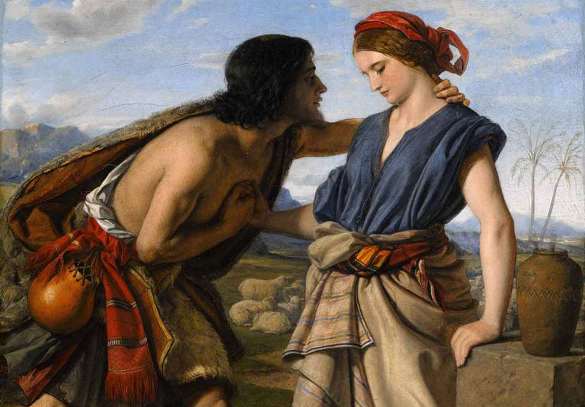
Jacob and Rachel by the well, Dyce
In response, Rachel ran to her father’s house and told him about the young man. Her father Laban ran out to meet Jacob, welcoming him warmly.
Jacob stayed with Rachel’s family for a month, and during this time he fell deeply in love with Rachel.
Jacob asks for Rachel
Jacob approached Laban for permission to marry Rachel.
But Jacob was empty-handed, and could not produce the normal bride-price for Rachel. Laban agreed that his daughter might marry Jacob but stipulated that, as a bride price, Jacob must work for him for seven years (the seven year cycle was sacred in the ancient world).
Jacob agreed, and he and Rachel settled down to see out the long period of waiting.
What neither of them realized was that Laban had agreed to let ‘his daughter’ marry Jacob, but had not specified which daughter it would be. Rachel had an older sister Leah, not so beautiful, and the older sister in a family was usually married before her younger sister. See Leah, the ugly sister
Laban tricks Jacob
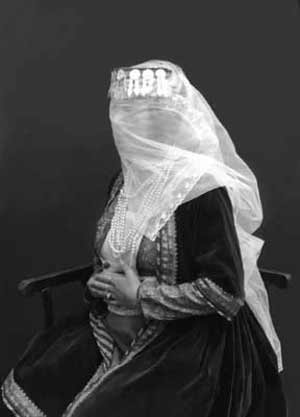 The seven years passed, and Jacob demanded his bride. The girl was dressed in her finest clothes, including a rich head-dress and veil that covered her face.
The seven years passed, and Jacob demanded his bride. The girl was dressed in her finest clothes, including a rich head-dress and veil that covered her face.
When the drinking banquet was over her father led her, still veiled, into the room of her bridegroom, and she and Jacob made love. By this time, he had drunk a considerable amount.
When the morning dawned, Jacob realized his mistake. The bride in his bed was not Rachel, but Leah – he had been tricked into marrying the wrong sister.
There was a kind of horrible irony in this: Jacob had outwitted his brother Esau; now he was outwitted by someone even wilier than himself. Moreover, he was fooled with the same trick: he pretended to be his brother Esau, and now Leah had pretended to be her sister Rachel.
Jacob marries both sisters
Needless to say, he was enraged at the trick played on him. Laban simply shrugged his shoulders.
Jacob insisted, and they came to an arrangement: he and Rachel would marry after the traditional week that Jacob must spend as Leah’s bridegroom, and work for another seven years to pay the bride-price for her.
Jacob seems never to have forgiven Leah for her part in the deception. She was the ‘unloved’ wife, but the original Hebrew word is better translated as ‘detested’.
Rachel may have been the more loved of the two, but she was not the most fertile. Though she and Jacob were deeply in love, she did not conceive for many years.
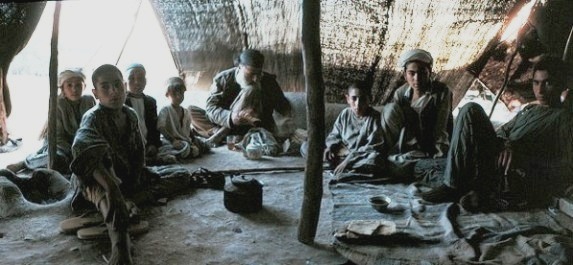
Modern-day nomadic tent-dwellers
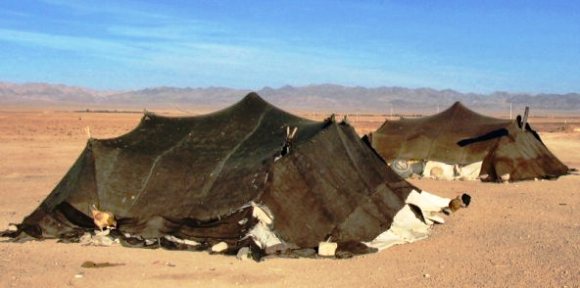
Leah on the other hand had no problem in bearing children. Almost immediately after marrying Jacob and despite the fact she was ‘unloved’, she became pregnant and gave birth to a series of male babies.
Leah bore Reuben, then Simeon, then Levi, then Judah. Each time she had another son, she prayed that Jacob would finally love her as he loved Rachel. He never did.
Rachel cannot conceive
Rachel faced a different problem. No matter how she prayed to God, no matter how much she was loved by Jacob, Rachel did not conceive.
In desperation she gave her maid Bilhah to Jacob, so that he could conceive a child with Bilhah as a surrogate mother for Rachel. This practice was common in the ancient world and it was a step up the social ladder for the woman, who became a concubine instead of a servant.
Bilhah had a son, whom Rachel named Dan. Then she had a second son, and Rachel called him Naphtali.
In response, Leah gave her own maid Zilpah to Jacob, and this resulted in yet more sons: Gad and Asher. A bitter rivalry developed between the two women.
The mandrake roots
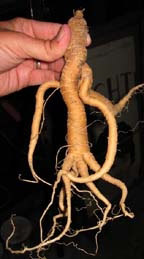
A mandrake root
One day, Leah’s son Reuben found some mandrake roots in the fields (see an example at right). Mandrake roots were a popular aphrodisiac in the ancient world, probably because they looked like the sexual organs of a well-endowed man.
Reuben took the mandrakes to his mother, and when Rachel saw them she asked Leah if she could have some of them. Leah agreed, on condition that Rachel commanded Jacob to have sexual intercourse with Leah that night.
Rachel complied, and this resulted in a fifth son for Leah. She called him Assachar. Later, another son arrived for Leah, called Zebulun. Finally, she bore Jacob a daughter, Dinah.
Rachel has a child at last
Only then, at the end of this long wait, did Rachel finally become pregnant. She bore a son called Joseph.
The birth of this son seemed to galvanize Jacob into action. He decided to break away from Laban’s tribe and go out on his own.
Jacob out-maneuvers Laban
Jacob asked Laban’s permission to leave and take a proportion of the flocks with him as his wages.
Once again Laban tried to trick Jacob – there could be no amicable resolution between these two.
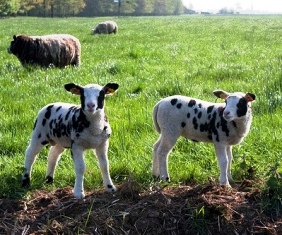 Jacob won the battle of wills because he was skilled in animal husbandry. He knew about cross-breeding techniques and was able to develop a particular type of animal that Laban had previously agreed Jacob might keep. Naturally, Laban and his sons resented Jacob’s success.
Jacob won the battle of wills because he was skilled in animal husbandry. He knew about cross-breeding techniques and was able to develop a particular type of animal that Laban had previously agreed Jacob might keep. Naturally, Laban and his sons resented Jacob’s success.
At this stage, Jacob felt God calling him to return to his homeland. Rachel and Leah were also dissatisfied. It was time to go. They both urged Jacob to take action.
Rachel steals the household gods
It seems that Rachel was still angry at her father for what he had done to her. Before they set out, she took the small figurines that represented the protective deities of her father’s family (the teraphim), telling no-one what she was doing.
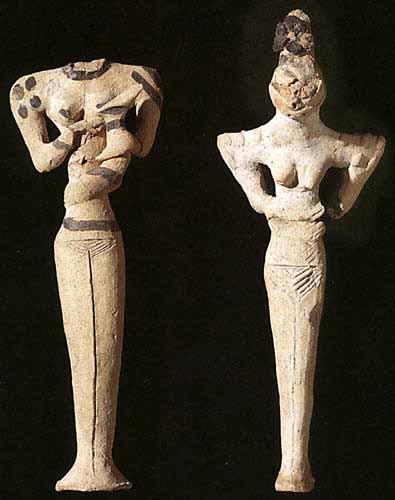
Ancient figurines from Ur
Years ago on what should have been her wedding night, Laban had stolen Rachel’s happiness. Now she stole something that was precious to him. The teraphim were a form of title deed, and owning them was the prerogative of the head of the family. By taking them Rachel secured this position for her husband.
The clan assembled, ready to return to the land of Jacob’s father, Isaac. They crossed the Euphrates and headed towards the hill country of Gilead.
But it was not going to be as easy as that. Laban pursued them, caught up with them, and confronted them. Where were the household gods? They were missing and Laban wanted them back.
This was news to Jacob – he did not know Rachel had taken them. He then said something rash: that whoever had done such a thing should die….
Rachel tricks her father
Laban did a search to find the teraphim. He entered the tents of Jacob, Leah, and the two maids – each of the woman in a polygamous marriage had her own separate tent. He found nothing.
Then he went into Rachel’s tent, where the teraphim were indeed hidden in saddle-bags.
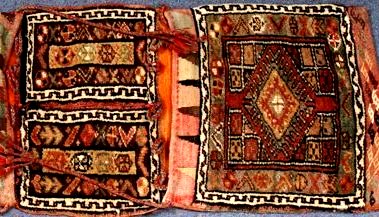
Nomadic saddle-bags
She greeted her father respectfully but did not rise from where she was sitting – on the saddlebags. She explained demurely that she could not do so, since she was menstruating. This meant that the cloth on which she was sitting was ritually unclean, and could not be touched by anyone except her.
Rachel’s manner was so sweet and demure that Laban did not argue, and he left her tent empty-handed. He had to back down. The two men made a face-saving covenant, and early the next morning Laban said good-bye to them all, and left.
Rachel dies in childbirth
When Laban was gone Rachel’s family moved on, and by the time it reached its destination Rachel was pregnant again.
On the way to Ephrath she went into labor, but this time things did not go well for her. The pains were very bad, and Rachel suffered terribly. To comfort her the midwife told her it would be a boy – and it was, Benjamin.
But Rachel did not live to see him grow. She died in childbirth.
Rachel had said once that she would die if she had no sons. In the end it was having sons that killed her.
People in Rachel’s story
Rachel, the beautiful daughter of Laban; she was loved by Jacob, had two sons but died in childbirth
Jacob, the trickster who was tricked into marrying a woman he did not want; later he married Rachel, his first and only love
Laban, Rachel’s father whose rivalry with Jacob came close to destroying them all
Leah, the unloved wife of Jacob who nevertheless bore him six sons and a daughter
Bilhah and Zilpah, maids of Rachel and Leah
A strange mistake

Jacob, Joseph, Sistine Chapel, Michelangelo
This is one of the biblical paintings by Michelangelo in the Sistine Chapel, Rome. Its caption, as you can see, is ‘Jacob, Joseph’.
For some reason, some websites, books, and even Wikipedia interpret the names as Jacob (from the Book of Genesis) and Joseph, husband of Mary of Nazareth in the New Testament.
The first assumption is correct; the second is nonsense. The painting is clearly not of Joseph in the New Testament. It is Joseph, son of Jacob in the Book of Genesis.
Each of the figures in Michelangelo’s painting is a known character in the Genesis story, as anyone who knows the Bible story of Jacob, Rachel and Leah can tell you. On the left side sits Jacob – and the face given him by Michelangelo suits the twisty man in Genesis very well. Beside him is a rather sickly Rachel with her first son Joseph. She will later die at the birth of her second child. On the right side is Leah ‘of the beautiful eyes’, blessed with many sons and, at far right, her daughter Dinah.
See also Michelangelo’s statues of Rachel & Leah
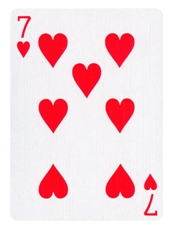
Bible study ideas & activities
Search Box
![]()
Rachel links
© Copyright 2006
Elizabeth Fletcher


